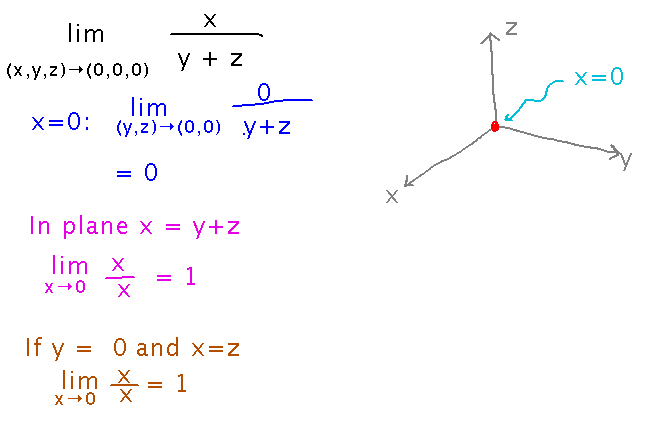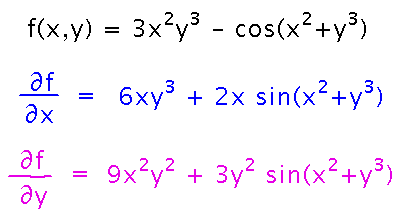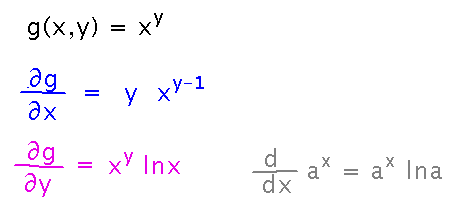Questions?
When Multivariable Functions Don’t Have Limits
Show that lim(xy,z)→(0,0,0) x/(y+z) doesn’t exist.
Analogous to how single-variable limits don’t exist if the limits from left and right differ, multivariable limits don’t exist if any paths that approach the point in question from different directions imply different limits. But now there are an infinite number of directions to approach from, not just 2.

There is no L’Hospital’s Rule for multivariable functions!
Key Point
Use multiple paths to show that limits don’t exist
Derivatives of Multivariable Functions
Section 4.3.
Partial derivatives give you the rate of change of a function if one of its variables varies while the others stay fixed. What if several variables vary at the same time? Then you need a “directional derivative,” which we’ll talk about in a week or so.
Practice
Find the partial derivatives of f(x,y) = 3x2y3 - cos(x2+y3)
You can evaluate partial derivatives by pretending all variables except the one you’re differentiating with respect to are constants and then treating the problem as a single-variable derivative.

How about g(x,y) = xy
Use the same approach:

Mathematica
Mathematica’s D function takes partial derivatives (that’s why you have to specify the variable to differentiate with respect to).
For example, it agrees with us on the previous example (noting that log is the natural logarithm, despite not being called ln)
Problem Set
See handout for details.
Key Points
Evaluating partial derivatives by hand.
Evaluating them with Mathematica.
Next
Second partial derivatives.
Then tangent planes and linearization.
Read section 4.4.